
How to Use Tower Pro SG90 servo: Examples, Pinouts, and Specs
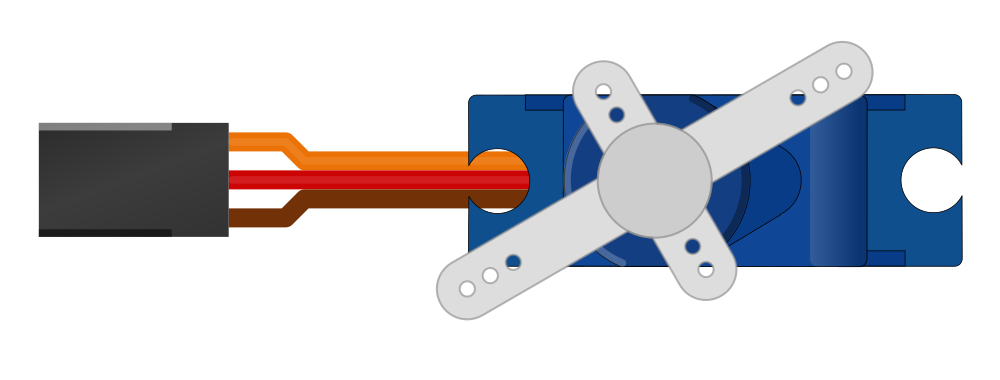
 Design with Tower Pro SG90 servo in Cirkit Designer
Design with Tower Pro SG90 servo in Cirkit DesignerIntroduction
The Tower Pro SG90 is a small, lightweight servo motor widely used in hobbyist projects for precise control of angular position. It is particularly popular in robotics, RC vehicles, and various DIY electronics projects due to its affordability, ease of use, and reliable performance. The SG90 operates on a voltage range of 4.8V to 6V and provides a torque of up to 1.8 kg-cm, making it suitable for a variety of applications that require precise movement and positioning.
Explore Projects Built with Tower Pro SG90 servo
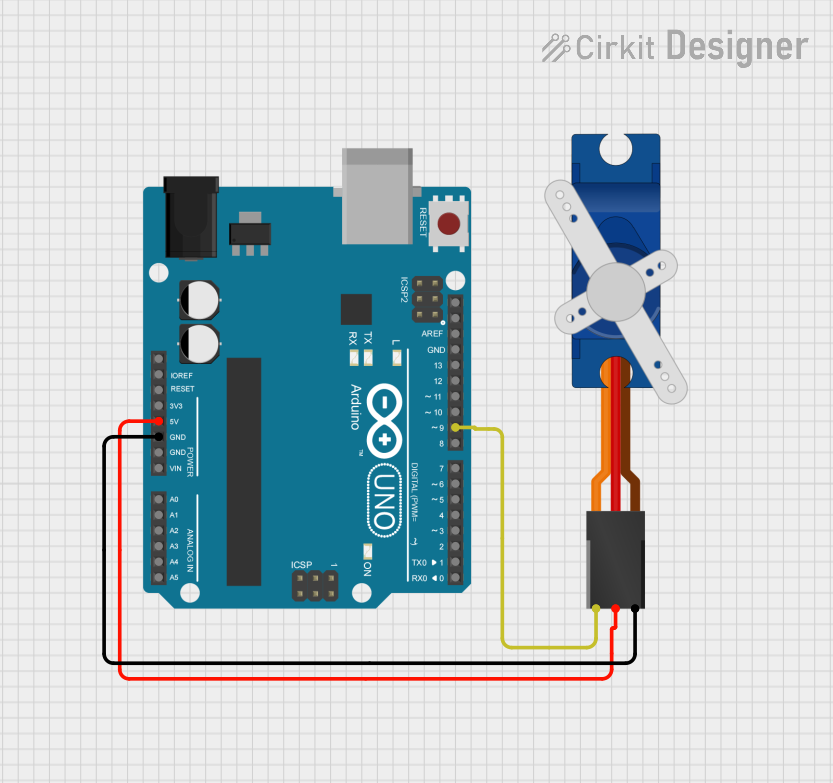
 Open Project in Cirkit Designer
Open Project in Cirkit Designer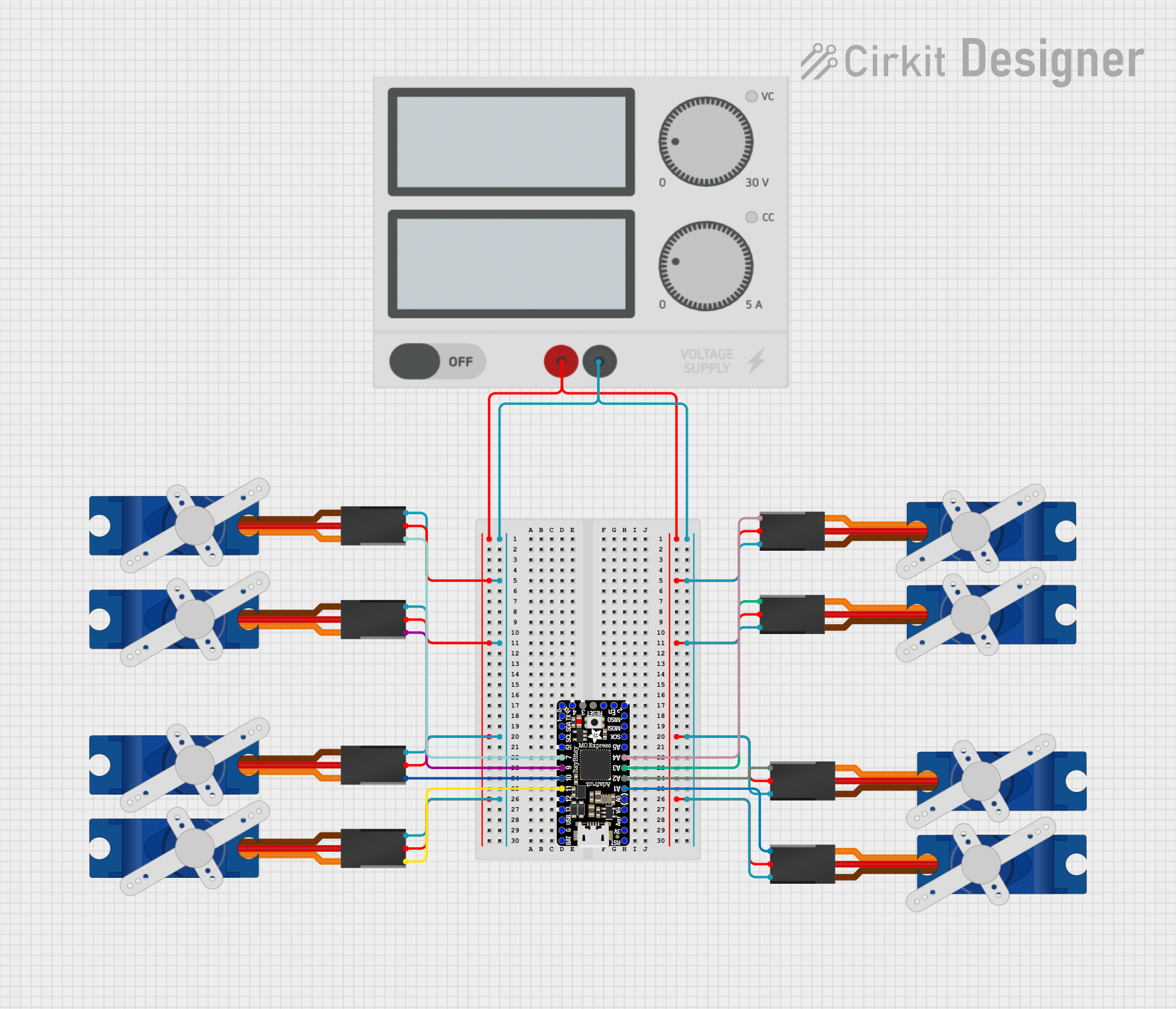
 Open Project in Cirkit Designer
Open Project in Cirkit Designer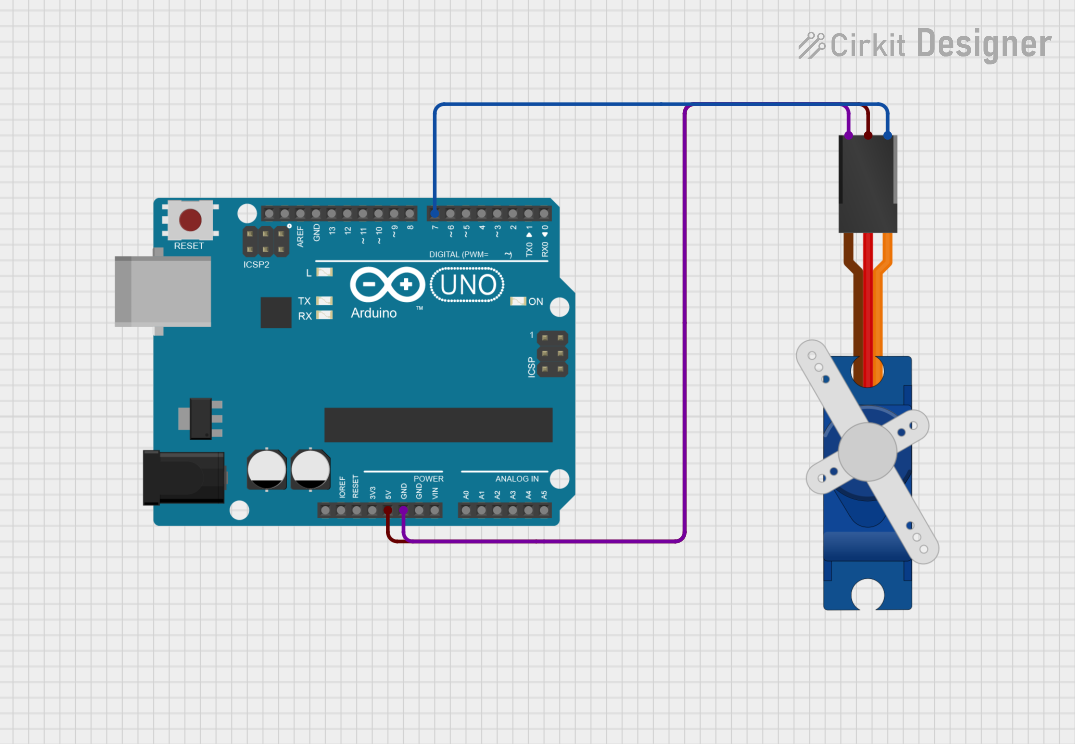
 Open Project in Cirkit Designer
Open Project in Cirkit Designer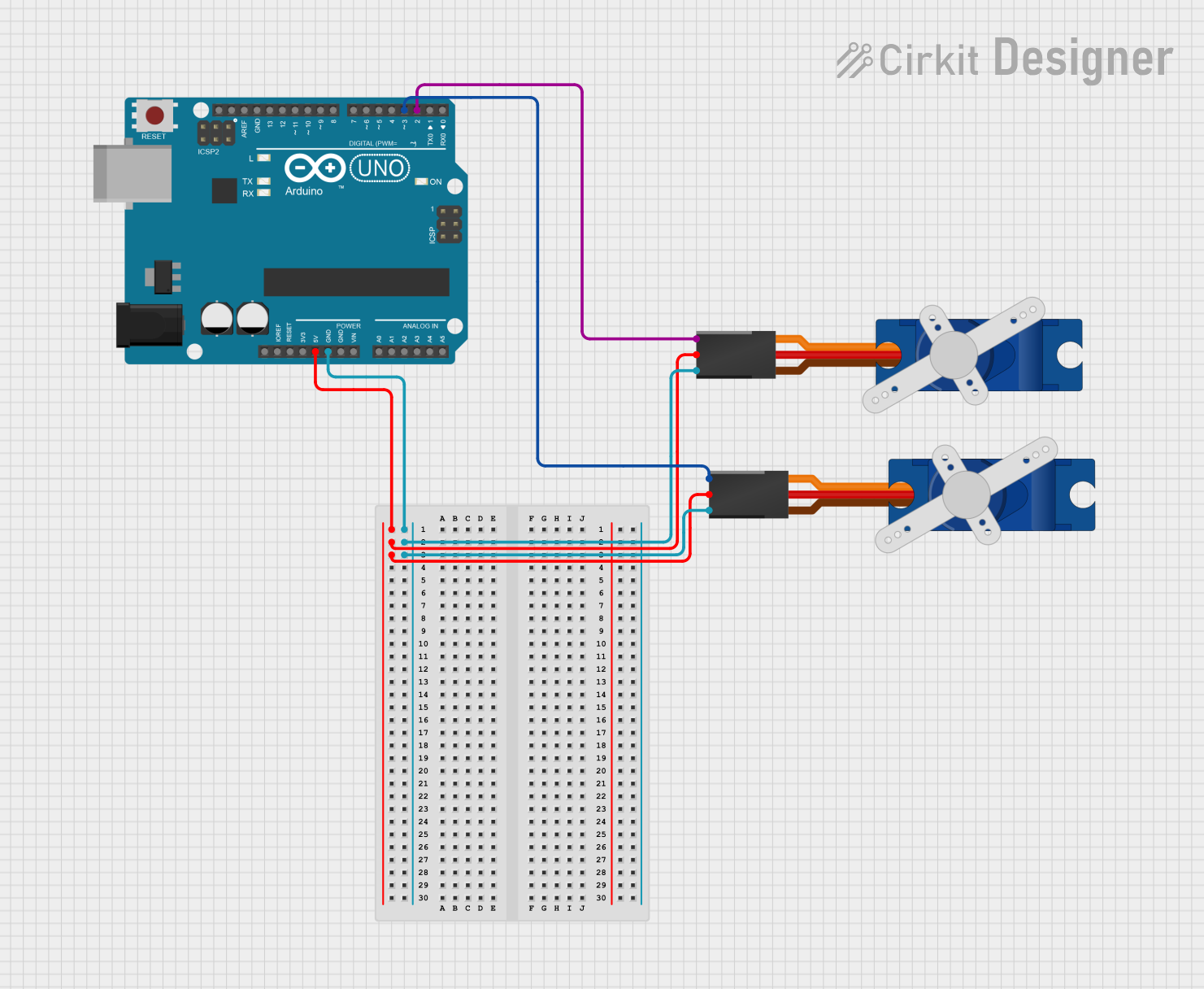
 Open Project in Cirkit Designer
Open Project in Cirkit DesignerExplore Projects Built with Tower Pro SG90 servo

 Open Project in Cirkit Designer
Open Project in Cirkit Designer
 Open Project in Cirkit Designer
Open Project in Cirkit Designer
 Open Project in Cirkit Designer
Open Project in Cirkit Designer
 Open Project in Cirkit Designer
Open Project in Cirkit DesignerTechnical Specifications
Key Technical Details
| Parameter | Value |
|---|---|
| Operating Voltage | 4.8V to 6V |
| Torque | 1.8 kg-cm (at 4.8V) |
| Speed | 0.1 sec/60 degrees (at 4.8V) |
| Weight | 9g |
| Dimensions | 22.2 x 11.8 x 31 mm |
| Control Signal | PWM (Pulse Width Modulation) |
| Rotation Range | 0 to 180 degrees |
Pin Configuration and Descriptions
| Pin Number | Pin Name | Description |
|---|---|---|
| 1 | GND | Ground |
| 2 | VCC | Power supply (4.8V to 6V) |
| 3 | Signal | PWM control signal |
Usage Instructions
How to Use the Component in a Circuit
- Power Supply: Connect the VCC pin to a 5V power supply and the GND pin to the ground of your circuit.
- Control Signal: Connect the Signal pin to a PWM-capable output pin of your microcontroller (e.g., Arduino).
Example Circuit with Arduino UNO
Arduino UNO SG90 Servo
----------- ----------
5V ----------------> VCC
GND ----------------> GND
Pin 9 --------------> Signal
Example Code for Arduino UNO
#include <Servo.h> // Include the Servo library
Servo myServo; // Create a Servo object
void setup() {
myServo.attach(9); // Attach the servo to pin 9
}
void loop() {
myServo.write(0); // Move servo to 0 degrees
delay(1000); // Wait for 1 second
myServo.write(90); // Move servo to 90 degrees
delay(1000); // Wait for 1 second
myServo.write(180);// Move servo to 180 degrees
delay(1000); // Wait for 1 second
}
Important Considerations and Best Practices
- Power Supply: Ensure that the power supply can provide sufficient current for the servo motor. A typical SG90 servo can draw up to 500mA under load.
- PWM Signal: Use a PWM signal with a frequency of 50Hz (20ms period). The pulse width should vary between 1ms (0 degrees) and 2ms (180 degrees).
- Mechanical Limits: Avoid forcing the servo beyond its mechanical limits (0 to 180 degrees) to prevent damage.
Troubleshooting and FAQs
Common Issues and Solutions
Servo Not Moving:
- Check Connections: Ensure all connections are secure and correct.
- Power Supply: Verify that the power supply is within the specified voltage range (4.8V to 6V).
- PWM Signal: Ensure the PWM signal is being correctly generated by the microcontroller.
Servo Jittering:
- Power Supply: Ensure a stable power supply. Noise or insufficient current can cause jittering.
- Signal Interference: Check for any sources of electrical noise that might interfere with the PWM signal.
Limited Range of Motion:
- Code: Verify that the code is correctly setting the desired angles.
- Mechanical Obstruction: Ensure there are no physical obstructions preventing the servo from moving through its full range.
FAQs
Q: Can I use the SG90 servo with a 3.3V microcontroller? A: The SG90 servo requires a power supply of 4.8V to 6V. However, the control signal can be driven by a 3.3V microcontroller if the power supply to the servo is within the specified range.
Q: How do I increase the torque of the SG90 servo? A: The torque of the SG90 servo is fixed by its design. To achieve higher torque, consider using a different servo model with higher torque specifications.
Q: Can I control multiple SG90 servos with a single Arduino? A: Yes, you can control multiple SG90 servos with a single Arduino by using multiple PWM-capable pins. The Servo library supports up to 12 servos on most Arduino boards.
This documentation provides a comprehensive guide to using the Tower Pro SG90 servo motor, covering its technical specifications, usage instructions, and troubleshooting tips. Whether you are a beginner or an experienced user, this guide will help you effectively integrate the SG90 servo into your projects.